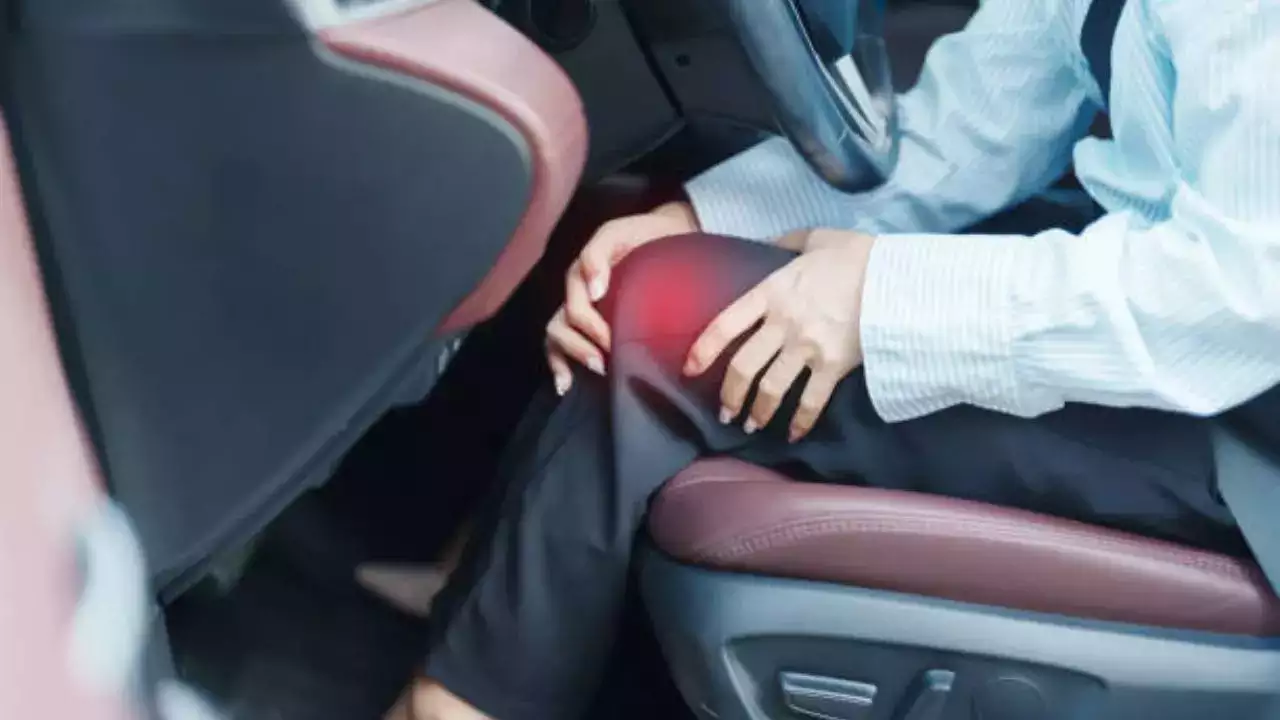Ashima Sharda Mahindra • 28 Mar 2025
Driving for Two Hours Daily? Here's How It Affects Your Knee Bone Health

Poor posture while driving is one of the main reasons behind knee pain
Those driving to work daily and spending more than two hours on the roads are at heightened risk for osteoporosis, according to experts. Doctors say sitting in one position and driving leads to mobility issues, which degenerate your bone health.
If you drive your car for over two hours every day, it can cause a painful condition known as driver’s knee or patellar tendinopathy, characterised by an inflammation of the patellar tendon that connects the kneecap with the shin bone. According to experts, poor posture while driving is one of the main reasons behind knee pain.
Why does driving cause bone issues?
Doctors say sitting for long hours in the car can be harder on your body than sitting on a couch. You are stuck in the same relative position for long periods, which causes your muscles to stiffen up. And since driving requires concentrating hard on the road and the traffic around you, it leads to muscle tension.
The repeated pressing of gas, brake, or clutch with bad positioning of the foot leads to big-time strain on the tendon connecting to the knee. As with other repetitive use injuries like rotator cuff tears and carpal tunnel syndrome, if the driver’s knee is left untreated, the problem becomes worse. According to doctors, what starts as patellar tendonitis can also progress to a condition known as chondromalacia patella - a deterioration of the cartilage in your knee that leads to even more pain and the potential for mobility loss.
How to relieve a driver's knee while driving?
Doctors say if you have been suffering from a driver's knee due to prolonged driving, there are a few exercises and stretches you can do to help relieve pain and inflammation. These stretches and exercises will help force your ankle to bend to operate the pedals and may help alleviate the pain temporarily. A few of these include:
Stretching
Take short breaks every 30 minutes to stretch your legs and alleviate tension in the knee joint, improve flexibility, and reduce stiffness. You can stretch by:
- Touch your toes and hold the position for ten seconds
- Swing each leg in a figure 8 pattern using a smooth, steady motion
- Perform a kneeling lunge for 10 seconds.
Bodyweight exercises
Bodyweight exercises help you strengthen your calf muscles. You can also take a walk for a few minutes during stops to help you stretch your back and spine.
Knee strengthening exercises
Always try to engage in exercises that target the muscles around the knee, like leg presses, squats, lunges, and calf raises. Make sure to also increase the intensity and duration of these exercises, as they can help improve knee stability and reduce the risk of future injuries.
Adjust your seat
Experimenting with your seat position can help you find the most supportive angle. It also includes moving your seat forward and backward, moving it up and down, and adjusting the tilt of the back and bottom of the seat.
To support your knee and back, make sure to position your seat so your spine becomes straight and aligned, which also helps give a good posture to your knees, thereby preventing pain.
Wear comfortable shoes
Certain types of footwear, like flip-flops and high heels, not only hinder proper and safe driving but also lead to increased pain in the back and knees. Poorly fitting shoes change your sitting posture, which means your pre-set seat adjustments won’t work the same way as they do with a flatter, properly fitted shoe.
The safest shoes to wear while driving are sneakers or other shoes that provide traction. A cushioned shoe, like a running sneaker, can also help absorb vibration from the driving pedals.
Get Latest News Live on Times Now along with Breaking News and Top Headlines from Health and around the world.